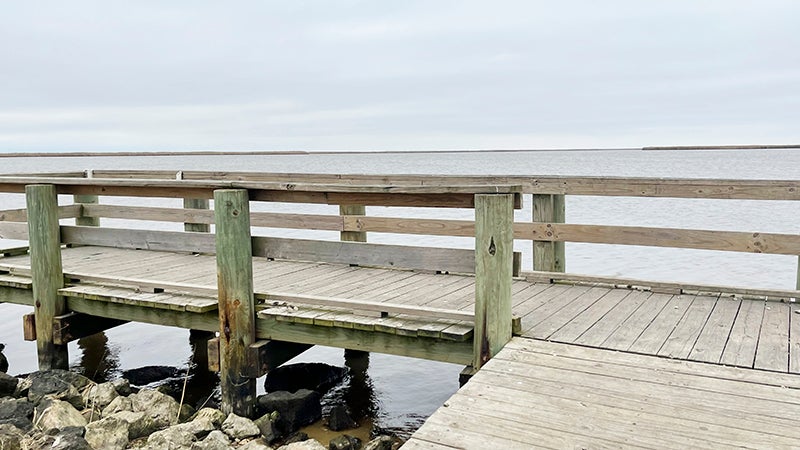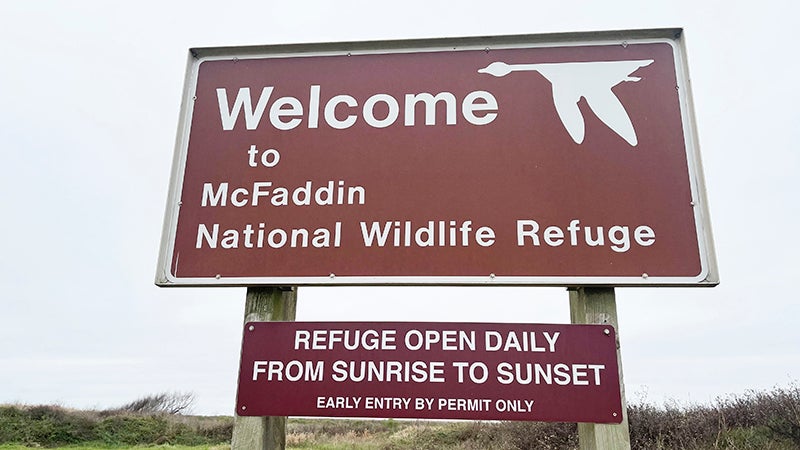Walter Umphrey property could make local wildlife refuge one of state’s largest
Published 12:20 am Sunday, January 9, 2022

- The McFaddin National Wildlife Refuge is home to river otters, bobcats, coyotes, American alligators and more than 280 documented species of birds. (Monique Batson)
|
Getting your Trinity Audio player ready...
|
The acquisition of property owned in part by the late Walter Umphrey will soon be added to the McFaddin National Refuge, which is the fourth largest in the state of Texas.
Umphrey, a Port Arthur native and legendary attorney who in the 1990s won a world-record $17.1 billion settlement against the tobacco industry, died in early September. Prior to his death, the philanthropist co-purchased Sabine Ranch and Cattle Co. between Winnie and Port Arthur.
The 12,000-acre plot was “brought back to life” by Umphrey and W.E. Wilson Jr., according to information from Texas Parks and Wildlife.

The entryway to the McFaddin National Wildlife Refuge is located at 7950 S. Gulfway Drive in Sabine Pass. (Monique Batson/The News)
The ranch is described as 80 percent pastureland, 8 percent farmland and 12 percent wetlands.
“It was sold to a group called the Conservation Fund, and that is a national organization,” said Tammy Kotzur, executive director of the Port Arthur Convention and Visitors Bureau.
“Their…mission is to buy land and preserve it so it is not broken up, so they bought it. They do not keep land. They buy it; they pay themselves back by raising money. Once they’re paid back, they turn it over to an agency to run it. So in 2023 it’s going to be turned over to the McFaddin National Wildlife Refuge.”
The Conservation Fund confirmed to Port Arthur Newsmedia Friday that they do now own Sabine Ranch.
Aubry Buzek with the U.S. Fish and Wildlife Service said the McFaddin refuge sits at 67,000 acres. Aransas National Wildlife Refuge measures 115,324 acres, Lower Rio Grande Valley National Wildlife Refuge is 109,512 acres and Laguna Atascocosa is 98,970 acres.
The McFaddin National Wildlife Refuge, established in 1980, has become the target of extreme attention recently as it will soon be part of a coastal rehabilitation project aimed at restoring the coastline to where it was one century ago.
Jefferson County Judge Jeff Branick had lobbied for years to get funds collected from fines and penalties imposed after the 2010 Deepwater Horizon oil spill, in which he was ultimately successful. In April, the county opened bids for companies to begin bringing sand from riverbed nearly two miles off shore to repair 17 miles of shoreline.
“It will stop saltwater intrusion into the 128 acres of marsh north of the beach, improve the health of the marsh; contribute to the finfish and crab habitat, the bird watching habitat, and create healthier vegetation,” Branick previously told Port Arthur Newsmedia.
According to the refuge, it includes the “largest remaining freshwater marsh on the Texas coast.”
Wildlife found in the refuge includes river otters, bobcats, coyotes, American alligators and more than 280 documented species of birds.
Click here to learn more about the coastal restoration project





